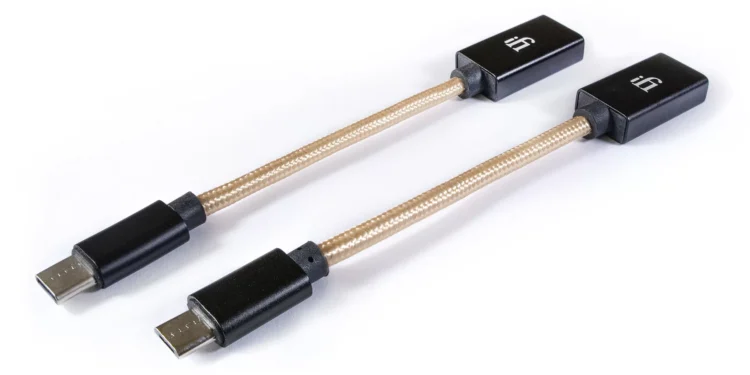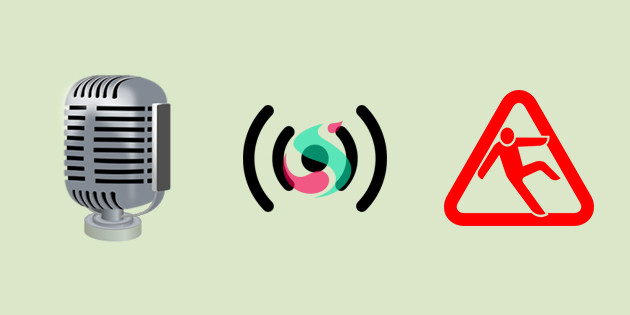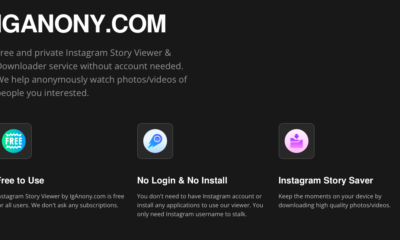News
What Does OTG Mean? Simple Explanation for Kids
Published
9 months agoon
By
Anderson
Have you ever heard someone talk about OTG? Maybe it’s something your parents use, or you’ve seen it mentioned while using your smartphone or tablet. But what does OTG mean exactly, and why is it so important? Don’t worry – we’re here to explain it in a simple way so even kids can understand!
In this article, we’ll talk about what OTG is, how it works, and why it’s great for phones and other devices. Let’s dive into the world of OTG!
What Is OTG?
OTG stands for “On-The-Go.” It refers to a feature that allows devices like smartphones or tablets to connect directly to other gadgets, such as USB drives, keyboards, or even game controllers, without needing a computer in between. Imagine being able to plug in a flash drive directly into your phone and access your files or using a keyboard to type on your tablet – that’s OTG in action!
With OTG, devices can communicate with each other and share data, making it super useful when you’re on the move and don’t have a computer with you. It’s like having a superpower that turns your phone or tablet into a mini computer that can connect to many different devices.
How Does OTG Work?
OTG works by using a special cable or adapter that connects your phone or tablet to other devices, like USB sticks or even mice and keyboards. These adapters have a small plug on one end that fits into your phone’s charging port, and on the other end, you can plug in a regular USB device. It’s that simple!
When you connect your phone to another device using OTG, your phone automatically recognizes the device and allows you to interact with it. For example, you can open files from a flash drive or control a game on your tablet with a gaming controller. The best part? You don’t need to install anything extra on your phone – it works instantly, as long as the device supports OTG.
OTG vs USB
You may be wondering: How is OTG different from USB? The difference is simple: USB (Universal Serial Bus) is a standard for connecting devices, while OTG is a special type of USB connection that allows your smartphone or tablet to act like a “host” device, just like a computer.

In a typical USB setup, your phone or tablet is the “client,” meaning it only receives data from devices like chargers or USB drives. With OTG, your phone switches roles and becomes the “host,” allowing it to send data to other devices and even control them.
Why Is OTG Important?
OTG is important because it gives you the flexibility to use your smartphone or tablet with a wide range of devices that you might otherwise only be able to connect to a computer. For example, you can back up your photos on a USB stick, connect a mouse to your tablet for easier navigation, or even plug in a keyboard to type emails and documents faster.
This makes OTG especially useful for people who need to work on the go or want to save space by carrying fewer devices. With OTG, your phone or tablet can do more than just run apps – it can turn into a mini workstation!
OTG Cables: What Are They?
OTG cables are the key to making OTG work. These special cables have two parts: one end plugs into your phone’s charging port, and the other end has a standard USB port. This allows you to connect regular USB devices, like flash drives, keyboards, and mice, to your phone or tablet.
OTG cables come in different sizes and designs, depending on your device’s port type (e.g., USB-C, Micro-USB). Some of these cables also work as adapters, meaning you can plug them into your phone and then attach a regular USB cable to the other end.
What Are OTG Cables?
OTG cables are essential for making OTG work, as they let you connect USB devices to your phone or tablet. These cables are tiny but powerful, allowing you to do everything from transferring files to playing games on your tablet. Without an OTG cable, your phone wouldn’t be able to interact with USB devices the same way a computer does.
OTG and Smartphones
Smartphones are one of the most popular devices that use OTG technology. With OTG, you can plug in USB flash drives, keyboards, mice, or even game controllers directly into your phone. This makes it much easier to share files, play games, or use your phone as a tool for work or school.
For example, if you’re traveling and need to transfer some photos or documents from your phone to a flash drive, you can do it with an OTG cable. There’s no need to find a computer – everything can be done directly from your phone. How cool is that?
Why OTG Is Great for Phones
OTG is a game-changer for phones because it adds more functionality. While smartphones are usually great for things like calling, texting, and browsing the web, OTG turns them into super devices that can do so much more.
For instance, you can use a keyboard to type faster, plug in a mouse for easier navigation, or connect a printer to print documents without needing a computer. Whether you’re at home, at school, or on the go, OTG helps your phone become more than just a phone – it turns it into a full-fledged productivity tool!
OTG for Kids: Easy to Use
OTG isn’t just for adults or tech experts. It’s also easy for kids to use! If you’re a kid who loves playing games, you can connect a game controller to your phone or tablet using OTG. This makes gaming feel just like playing on a console but with the convenience of a portable device.

Parents might also find OTG helpful for schoolwork. Kids can connect a keyboard to their phone or tablet and type more comfortably, or even plug in a mouse for easier navigation. OTG allows kids to use their devices in creative and practical ways, making it a fun tool for learning and playing.
The Future of OTG
The future of OTG looks bright! As technology keeps improving, OTG will likely become even more powerful and versatile. We might see even more devices supporting OTG, including virtual reality headsets, smartwatches, and more. This means that your phone or tablet could potentially control even more gadgets, opening up exciting new possibilities for entertainment, education, and productivity.
What’s Next for OTG Technology?
OTG technology will continue to evolve as more devices support it. In the future, you might see faster data transfer speeds, more efficient power usage, and even better compatibility with different gadgets. It could become even easier to use OTG with wireless devices, like Bluetooth keyboards or game controllers.
With advancements in wireless OTG technology, you might not even need physical cables to connect devices. Instead, your phone could wirelessly control other gadgets, making it even more convenient to use.
How to Use OTG?
Using OTG is easy! All you need is an OTG cable or adapter and a device that supports OTG. Here’s a simple step-by-step guide:
- Get an OTG Cable – Make sure you have the right cable for your device (USB-C, Micro-USB, etc.).
- Plug in the Cable – Insert one end of the OTG cable into your phone or tablet’s charging port.
- Connect Your USB Device – Plug a USB device, like a flash drive, keyboard, or mouse, into the other end of the OTG cable.
- Start Using It – Your phone should automatically recognize the device, and you can start using it right away!
It’s that simple. Whether you’re transferring files or playing a game, OTG makes it easy to connect and interact with all kinds of devices.
OTG Troubleshooting Tips
Sometimes, OTG might not work the way you expect. If you’re having trouble, here are a few tips:
- Check the OTG Cable – Make sure the OTG cable is properly connected to your device and USB device.
- Verify Compatibility – Not all devices support OTG. Double-check that your phone or tablet is compatible with OTG technology.
- Restart Your Device – If your phone isn’t recognizing the USB device, try restarting it and reconnecting the cable.
- Use the Right USB Device – Some devices, like certain printers or external hard drives, may not work with OTG. Stick to smaller USB devices like flash drives, keyboards, or mice.
By following these simple tips, you can usually get OTG working in no time!
The Bottom Line
OTG is a cool and useful technology that makes your phone or tablet even more powerful. By connecting to USB devices like flash drives, keyboards, and game controllers, OTG turns your device into a mini computer that can do much more than just run apps.
Whether you’re transferring files, playing games, or typing a school report, OTG has got you covered. It’s simple to use, and with the right cables, your phone can become a super device that does everything you need. So, next time you hear someone talk about OTG, you’ll know exactly what it means and how it works!
You may like
News
How to Have a Louder Voice: Easy Tips That Really Work!
Published
12 hours agoon
July 28, 2025By
Anderson
Having a louder voice isn’t just about shouting—it’s about learning to use your body the right way, practicing smart techniques, and keeping your voice healthy. Whether you’re speaking in class, presenting at work, or just want to sound more confident, these simple steps can help you turn up the volume naturally.
Why Your Voice Sounds Quiet
Have you ever wondered why your voice doesn’t sound as loud as others? There could be a few simple reasons behind it. One common reason is that you might be speaking from your throat instead of using the strong muscles in your belly. Another reason is that your posture might be slouched, making it harder for your lungs to push out strong air. Quiet voices often happen when we’re nervous or not used to speaking up. Sometimes, people talk quietly because they’re trying to be polite or don’t want to interrupt others. But over time, this can become a habit.
Also, your body and lifestyle matter. If you don’t drink enough water, your voice can become dry and weak. If you’re not breathing properly or you have bad posture, your voice won’t come out as loud and full as it could. Understanding these simple reasons is the first step in learning how to have a louder, stronger voice.
Use Your Belly, Not Your Throat
Here’s a big secret: loud voices come from the belly, not the throat. If you try to speak loudly using your throat, you’ll feel sore quickly. Your voice will sound strained, not powerful. Instead, use something called diaphragmatic breathing. This means breathing deep into your belly, not just your chest.
To try it, put one hand on your chest and one on your stomach. Now breathe in deeply through your nose. If your stomach rises more than your chest, you’re doing it right. Now, when you talk, push from your belly like you’re blowing up a balloon. This helps your voice come out louder and clearer—without hurting your throat. Singers and public speakers use this trick all the time!
Practice Every Day With These Fun Tricks
Practicing every day is the best way to build a louder voice. Just like training your muscles, your voice needs regular workouts. Luckily, it doesn’t have to be boring! Try these fun and simple tricks:
Try the “Lion Roar” Game
Stand in front of a mirror, open your mouth wide, take a deep breath, and give your best lion roar! Not a scream—but a powerful, deep sound from your belly. This helps you practice pushing out strong sounds without hurting your voice. Do it 3–5 times every day.
Read Aloud Like a Teacher
Pick your favorite book or story and read out loud like a teacher reading to a class. Use strong, clear words. Pretend you’re explaining to a big group of kids who need to hear you in the back row. This builds both volume and confidence.
Record Yourself and Listen Back
Use your phone or computer to record yourself reading, talking, or even singing. Then, listen back. Ask yourself: do I sound strong and clear? What could be louder or clearer? It might feel weird at first, but this is a great way to hear how others hear you—and improve fast.
Fix Your Posture to Sound Stronger
Believe it or not, how you stand or sit affects how loud your voice sounds. When you slouch, your lungs can’t take in as much air, and your belly muscles don’t work as well. This makes your voice sound weak and small. But when you sit or stand up tall with your shoulders back and your head straight, your body is open and ready to support your voice.
Try this: Stand like a superhero. Feet apart, back straight, chest out, and chin up. Now take a deep breath and say something loud and clear. Feels better, right? Good posture is your secret weapon for sounding stronger and more confident, every time.
Drink Water and Keep Your Voice Happy
Your voice is a muscle, and just like the rest of your body, it needs water to work well. When your throat is dry, your voice can crack or sound weak. To keep your voice healthy and happy, drink plenty of water—at least 6 to 8 glasses a day.
Avoid drinks that dry you out, like too much soda or coffee. If you’ve been shouting or talking a lot, give your voice a break. Whispering can actually make your voice worse, so just rest instead. Eating healthy fruits and veggies helps too! Hydration and good nutrition make your vocal cords smooth, strong, and loud.
Words That Help You Practice Being Loud
Some words and phrases are great for voice training. They’re full of strong sounds that help you practice using your belly, lips, and mouth in just the right way. You can say them loudly and clearly to build your voice muscles.
Power Phrases to Say Loudly
Try shouting these into the air like you’re on stage:
- “I am here!”
- “Let’s do this!”
- “I’ve got this!”
- “Hear me now!”
- Repeat each one three times with a deep breath. Make sure the sound comes from your belly, not your throat.
Speak in Front of a Mirror
Practicing in front of a mirror helps you watch your posture, mouth movements, and facial expressions. Say your power phrases or read a book out loud. Watch yourself: Are you opening your mouth wide enough? Are you standing tall? Practicing this way builds confidence fast.
Don’t Shout – Speak With Power
A loud voice doesn’t mean yelling. Shouting strains your throat and sounds angry. Instead, speak with power. Use your breath, your belly, and your whole body to send your voice out. It should feel easy, not forced. Think of your voice like a musical instrument: when you use it right, it sounds great and doesn’t get tired.
Talk to Family and Friends More Often
Talking regularly helps keep your voice strong. Try to have more conversations with your family, friends, or even pets! When you speak often, you learn how to use your voice naturally and confidently. You’ll also feel more comfortable speaking louder without thinking about it.
You can play voice games, read to younger siblings, or explain your day in a fun, detailed way. The more you talk, the better you get—and the louder and stronger your voice becomes over time. Speaking more is free practice that helps your voice grow every single day.
The Bottom Line
Learning how to have a louder voice isn’t hard—it just takes the right tools, good practice, and a little patience. Use your belly, stand tall, drink water, and play voice games to build your strength. You don’t need to shout—you just need to speak with power and confidence.
Whether you’re 10 years old or 50, anyone can learn how to be heard. And when your voice is strong, your message gets across clearly. So stand tall, breathe deep, and start practicing today. Your louder voice is just around the corner!
News
2015 Volkswagen – A Simple Guide to This Popular Car
Published
12 hours agoon
July 28, 2025By
Anderson
The 2015 Volkswagen remains a top pick for people looking for a reliable, stylish, and budget-friendly vehicle. Even after all these years, this car has held its value, thanks to its solid German engineering, excellent fuel economy, and timeless design. Let’s explore everything you need to know about the 2015 Volkswagen in this easy-to-follow guide.
What Is the 2015 Volkswagen?
The 2015 Volkswagen refers to a range of vehicles released by the German automaker Volkswagen in the year 2015. These vehicles are known for being dependable, comfortable, and affordable. Whether you were looking for a compact car, a spacious sedan, or a sporty hatchback, the 2015 Volkswagen lineup had something for everyone. In 2015, Volkswagen focused on combining fuel efficiency, safety, and a high-quality interior into each of its models.
From city drivers to small families, many Americans picked a 2015 VW as their car of choice. One reason? It offered a European feel at an affordable price. Plus, these cars were built to last. Even today, many 2015 Volkswagen models are still on the road, working well after 100,000 miles.
Why People Still Love the 2015 Volkswagen
There are plenty of cars out there, but the 2015 Volkswagen continues to stand out. One big reason is reliability. Many owners of 2015 Volkswagens say their vehicles still drive smoothly, even years later. These cars were built with quality in mind, using solid materials that don’t wear out easily.
Another reason is the comfort. The 2015 VW cars offer supportive seating, quiet rides, and interiors that look modern even by today’s standards. For example, soft-touch materials on the dashboard and thoughtful designs make you feel like you’re in a more expensive car. The infotainment system was simple, yet it had what most people needed, including Bluetooth and USB support.
Also, the driving experience of the 2015 Volkswagen models is a big plus. Whether you’re driving in the city or on the highway, you’ll enjoy responsive steering and stable handling. Even the base engines offer good performance while saving gas.
Lastly, the 2015 Volkswagen price makes it a smart pick for used car buyers. Compared to other vehicles in the same year, you often get more features for your money.
2015 Volkswagen Models You Should Know About
Volkswagen released several models in 2015, each made for different types of drivers. Whether you need something small and efficient or roomy and powerful, there was likely a 2015 VW for you.
Let’s look at the top three models most people consider:
2015 Volkswagen Jetta
The 2015 VW Jetta was one of the most popular choices in the U.S. It came with several engine options including a 2.0L 4-cylinder, a 1.8L turbocharged engine, and even a diesel option. The Jetta was perfect for commuters. It had a smooth ride, a spacious trunk, and enough room for five adults. The cabin was simple but felt upscale for the price.
One of the best things about the 2015 Jetta was its fuel economy, especially in the TDI diesel version, which could get up to 46 MPG on the highway. For people who drive long distances, this was a huge plus.
2015 Volkswagen Golf
The 2015 VW Golf is often praised as one of the best compact hatchbacks of its time. It won several awards for its design and performance. The Golf had a sporty look, responsive steering, and came with a turbocharged engine that made it fun to drive.
There was also a GTI version for people who wanted even more power. This model had upgraded suspension, sporty styling, and quicker acceleration. Inside, the Golf offered a spacious interior for a compact car, with fold-flat rear seats that gave you plenty of cargo space.
2015 Volkswagen Passat
The 2015 VW Passat was Volkswagen’s midsize sedan, great for families or people who wanted a bit more room. It came with either a 1.8L turbocharged engine or a powerful V6. The Passat was known for its huge back seat, offering more legroom than many of its rivals.
It also had a large trunk and a refined ride, perfect for long road trips. While not as sporty as the Golf, the Passat focused on comfort and space, making it a great all-around car.
How Much Does a 2015 Volkswagen Cost Today?
If you’re thinking about buying a used 2015 Volkswagen, the good news is that prices are very reasonable. Depending on the model, trim, mileage, and condition, you can expect to pay between $6,000 and $12,000 in the United States.
For example:
- A 2015 Jetta with moderate mileage might cost around $7,500–$9,000
- A 2015 Golf in good shape could go for about $8,000–$11,000
- A 2015 Passat, especially the V6 version, might reach $10,000–$12,000
If the car has low mileage, was well-maintained, and includes extras like a sunroof or leather seats, expect the price to be on the higher end. On the other hand, high-mileage models might be found for less than $6,000. Always check vehicle history and maintenance records before buying.
Is the 2015 Volkswagen Good on Gas?
Yes, most 2015 Volkswagen models are known for good gas mileage. Volkswagen designed its 2015 lineup to be fuel-efficient without giving up power. Here’s a quick look at the MPG numbers:
- 2015 Jetta TDI Diesel: Up to 31 MPG city / 46 MPG highway
- 2015 Jetta 1.8T Gas: Around 25 MPG city / 37 MPG highway
- 2015 Golf TDI Diesel: Up to 30 MPG city / 45 MPG highway
- 2015 Passat 1.8T: About 24 MPG city / 36 MPG highway
These numbers make the 2015 VW a good choice for people who want to save money on gas, especially if they drive often or commute long distances. Diesel versions are especially popular for their fuel savings, but even the gas models offer competitive mileage.
Safety Features in the 2015 Volkswagen
Volkswagen placed a high priority on safety in 2015. Each model was designed to protect both the driver and passengers in the event of a crash. Standard safety features included:
- Anti-lock brakes (ABS)
- Electronic Stability Control (ESC)
- Multiple airbags (front, side, and curtain)
- Tire pressure monitoring systems
- Rearview camera (in some trims)
Some models also came with advanced safety features such as forward collision warning and blind spot monitoring, especially in higher trims.
Crash Test Ratings
The 2015 Volkswagen Jetta, Golf, and Passat all received strong ratings from safety organizations. The National Highway Traffic Safety Administration (NHTSA) gave most 2015 VW models 4 or 5 stars overall.
The Insurance Institute for Highway Safety (IIHS) awarded the 2015 Golf and Jetta with “Top Safety Pick” ratings, especially those equipped with forward crash prevention systems.
Child Safety Features
Families love the 2015 VW models because they are child-friendly. They come with:
- LATCH system for car seats
- Rear door child locks
- Window lock-out switch
- Good rear-seat space for booster and child seats
How Long Does a 2015 Volkswagen Last?
When properly maintained, a 2015 Volkswagen can last well over 150,000 miles, and many owners report reaching 200,000 miles without major issues. Regular oil changes, tire rotations, and following the maintenance schedule are key to long life. Diesel engines, especially, are known for their durability.
Common Problems with the 2015 Volkswagen
No car is perfect, and the 2015 Volkswagen had a few issues worth knowing. Some owners reported problems with:
- Electronic sensors or warning lights
- DSG transmission (in automatic performance models)
- Fuel system issues (especially in diesel versions)
- Infotainment glitches
However, most of these problems are not serious and can be fixed at a reasonable cost. Buying a model with a good maintenance record helps avoid future headaches. Extended warranties can also provide peace of mind.
The Bottom Line
The 2015 Volkswagen continues to be a smart buy for anyone looking for a reliable and stylish used car. With strong fuel economy, solid safety ratings, and a comfortable driving experience, it’s easy to see why many people still love this vehicle.
Whether you’re a student, a commuter, or a small family, there’s likely a 2015 VW model that fits your needs. The Jetta is great for daily driving, the Golf adds fun and versatility, and the Passat is ideal for comfort and space. With the right care, these cars can run smoothly for many more years.
If you want a car that blends affordability, safety, and quality, the 2015 Volkswagen is still one of the best used cars you can buy in the United States.
News
What is April 5 Day? Fun Facts About This Special Date in the USA
Published
12 hours agoon
July 28, 2025By
Anderson
April 5 might seem like just another spring day, but it holds a unique place in the calendar, especially in the United States. Many people search for “April 5 Day” to find out if it’s a holiday, learn about famous birthdays, explore fun events in history, or even get school project ideas. Whether you’re curious about what happened on April 5 or just love learning fun facts about dates, this article will take you through everything you need to know.
What is April 5 Day All About?
April 5 Day isn’t an official national holiday, but it’s a date that has captured the interest of thousands of Americans. It’s a day filled with notable events, historical significance, and popular birthdays. For many, it serves as a reminder of how much history can be packed into just one day of the year.
People often search for this date to learn about April 5 events in history, famous birthdays on April 5, and to see if there are any celebrations or observances connected with it. Thanks to search engines and platforms like Wikipedia and news archives, this day has grown in popularity online. And because it’s in early April, which is a season of renewal and springtime energy, people associate it with positivity, change, and growth.
In the age of social media, April 5 also trends for different reasons—from throwback events to celebrity mentions. Even if nothing massive happens that day in a given year, its past is rich enough to make people curious about what makes April 5 special.
Is April 5 a Holiday in the USA?
No, April 5 is not a federal holiday in the United States. That means schools, banks, and government offices are usually open. However, the date might be associated with local events, observances, or informal celebrations.
In some cities, there may be community activities or local historical events remembered on April 5. And because it falls during spring break for some schools in the U.S., it can be a date filled with vacations, festivals, or family outings. While it’s not a formal holiday like the 4th of July or Thanksgiving, people still find ways to mark the day in fun and meaningful ways.
Some Americans also link this date to seasonal transitions and observe religious or cultural rituals depending on the year. In short, April 5 may not be a federal holiday, but it’s still a meaningful day in many ways.
Fun Things That Happened on April 5
So, what actually happened on April 5? A lot more than you might think! Over the years, this day has seen important moments in history, pop culture, sports, and even science. From iconic inventions to celebrity births, April 5 has earned its place on the timeline.
Here are some interesting highlights from different categories:
Famous Birthdays on April 5
- Pharrell Williams – Born in 1973, the American singer, songwriter, and producer has had a massive influence on pop music.
- Greg Mathis – Born in 1960, he is a former judge turned television personality known for “Judge Mathis.”
- Spencer Tracy – Legendary actor born in 1900, known for classic Hollywood films.
These birthdays are often searched under terms like “April 5 famous birthdays” or “celebrity birthdays April 5.” Fans of music, movies, and history love to know who shares their birthday!
Big Moments in History
- 1614 – Pocahontas marries John Rolfe: This union between a Native American woman and an English settler helped bring temporary peace between the English and Powhatan tribes.
- 1951 – Ethel and Julius Rosenberg sentenced to death: The couple was convicted of spying for the Soviet Union, marking a tense moment in Cold War history.
- 1992 – Siege of Sarajevo begins: A tragic day in world history when violence erupted in Bosnia.
These events are key when students and educators look up “what happened on April 5 in history” for school projects or educational purposes.
Sports Events on April 5
- 1984 – Kareem Abdul-Jabbar becomes NBA’s all-time leading scorer: This record-breaking moment happened on April 5, putting him in the basketball history books.
- 2003 – NCAA Final Four Games: College basketball fans might remember the exciting matches that often happen around this date.
- MLB Opening Week: Many Major League Baseball seasons start in early April, making April 5 part of baseball excitement.
Sports enthusiasts searching “April 5 sports history” or “sports events April 5” often stumble upon thrilling games and records.
Why People Search “April 5 Day” Online
People search “April 5 Day” for several reasons. Some want to know if it’s a holiday or special observance, while others are curious about famous events or historical milestones that occurred on this date. Teachers might search it for lesson planning, and students often need it for history projects.
Search terms like “April 5th what happened,” “April 5 national day,” and “events April 5 USA” have increased over the years. This shows that the date continues to spark interest—thanks in part to the internet making date-based research easier and more popular.
In addition, April 5 is often mentioned in pop culture and on social media, causing spikes in Google Trends. Users may also search it around birthdays or anniversaries to see if any fun facts align with their personal history.
April 5 in Pop Culture
Pop culture has a way of making certain dates stick in our minds—and April 5 is no exception. Over the years, the date has appeared in movies, music releases, and TV shows.
For example:
- The TV show “The Office” aired episodes around early April that featured memorable moments in workplace comedy.
- April is often the release season for spring albums and films. Several major movies like “Fast Five” and “Captain America: The Winter Soldier” were released in April in different years, making early April—including April 5—a movie lover’s highlight.
- The date is commonly used for symbolic plot events in books and fiction.
Because of this, fans search for “April 5 pop culture references” or similar phrases to see what’s linked to their favorite characters or stories.
April 5 Celebrations in the USA
Although April 5 isn’t a national holiday, Americans find creative ways to mark the day. From family traditions to local events and even school-related projects, the date becomes more special when people make it personal.
Family and Local Events
Many families use April 5 as a day for spring picnics, Easter crafts (if the date is close to Easter), or local fair visits. Because it’s early April, the weather is often perfect for outdoor activities. Some towns may host local festivals or community clean-up events, making it a great day to participate in something meaningful.
It’s also a popular time for birthday parties, since some notable celebrities share the date and it falls close to the weekend in many years.
School Projects or History Lessons
Schools often assign date-based research projects, especially in social studies or American history classes. April 5 offers plenty of interesting material—from Native American history to sports achievements and political milestones.
Educators might guide students to look up “what happened on April 5 in American history” to build timelines, write essays, or present class posters. The date helps children learn how even ordinary days can hold extraordinary stories.
What Happened on April 5 in History?
To sum up some major historical events:
- 1614: Pocahontas and John Rolfe’s marriage (Virginia)
- 1955: Winston Churchill resigns as Prime Minister of the UK
- 1994: Kurt Cobain, lead singer of Nirvana, dies (news reached media around April 5–6)
- 2010: Mine explosion in West Virginia kills 29 workers—an important workplace safety reminder
All of these events contribute to why April 5 remains important in history books and news archives.
Is April 5 a Good Day to Remember?
Absolutely! April 5 might not have fireworks or parades, but it’s packed with memories, milestones, and meaning. It’s a day when sports records were set, leaders made history, and artists were born. It’s also a day when families come together, students learn new things, and communities celebrate the season.
Whether you’re marking it for personal reasons, historical interest, or pop culture fun, April 5 is worth remembering.
The Bottom Line
April 5 Day might not be a holiday with a day off, but it’s a date that proves even ordinary days can have extraordinary meaning. From famous birthdays and historical events to fun facts and classroom inspiration, this springtime day in the United States calendar continues to catch people’s attention.
So next time you see “April 5 Day” trending online or appearing in a schoolbook, remember—it’s not just another day. It’s a day with a story.

How to Have a Louder Voice: Easy Tips That Really Work!

2015 Volkswagen – A Simple Guide to This Popular Car

What is April 5 Day? Fun Facts About This Special Date in the USA

TuGuiaUSA.com, Empleos y Oportunidades en USA

Camille Monfort, Shadows of the Crimson Moon

Breaking News: Tea Leoni and Tim Daly Announce Split
Trending
-

 Business7 months ago
Business7 months agoTuGuiaUSA.com, Empleos y Oportunidades en USA
-

 Life Style8 months ago
Life Style8 months agoCamille Monfort, Shadows of the Crimson Moon
-

 Life Style7 months ago
Life Style7 months agoBreaking News: Tea Leoni and Tim Daly Announce Split
-

 Games7 months ago
Games7 months agoUnlocking Access to Unblocked Games World at School
-

 Life Style8 months ago
Life Style8 months agoJulio Urias Wife: Inside His Life with Daisy
-

 Life Style7 months ago
Life Style7 months agoIgAnony: The Anonymous Instagram Story Viewer
-

 Education8 months ago
Education8 months agoTribute Printed Pics: A Special Way to Remember
-

 Life Style7 months ago
Life Style7 months agoMichael Ciminella: Biography, Age, Net Worth & Career Highlights
